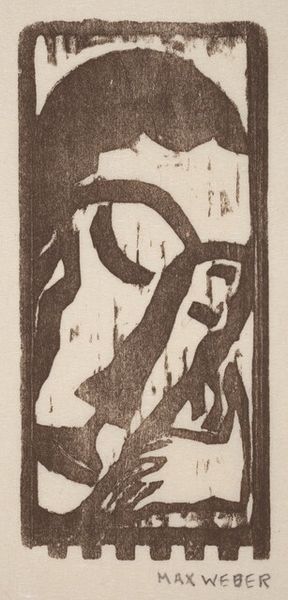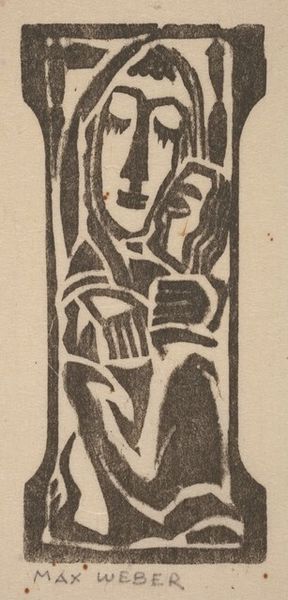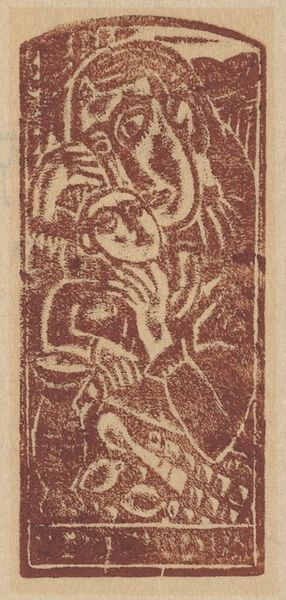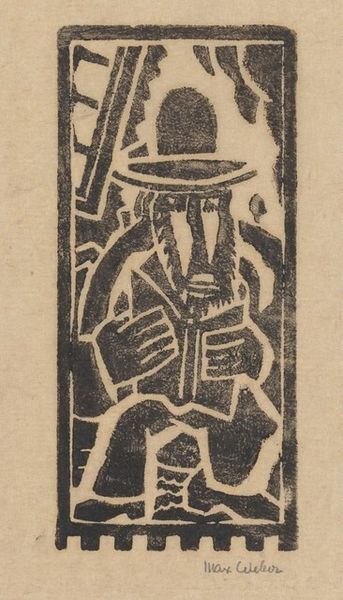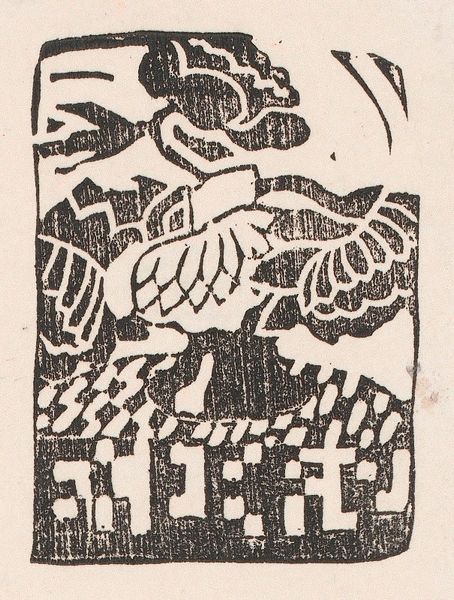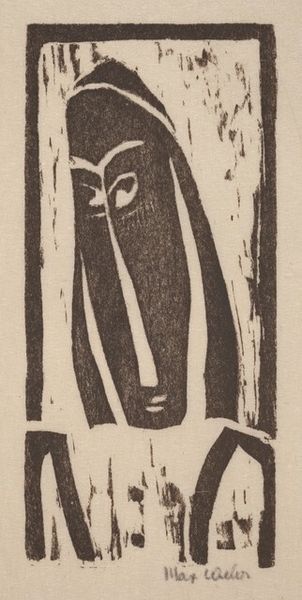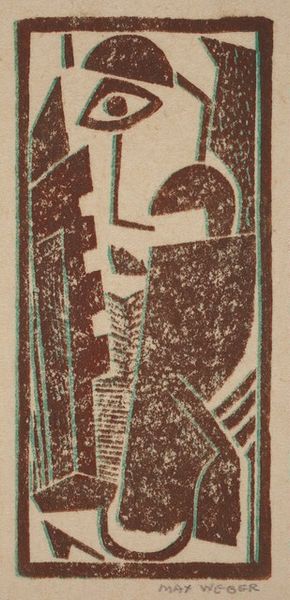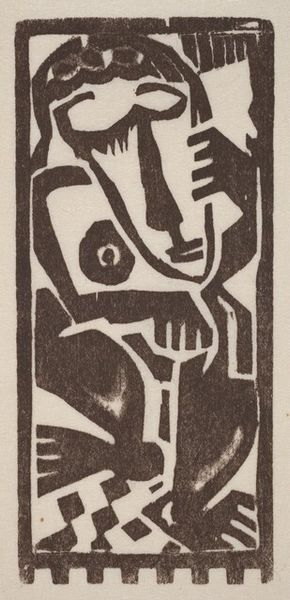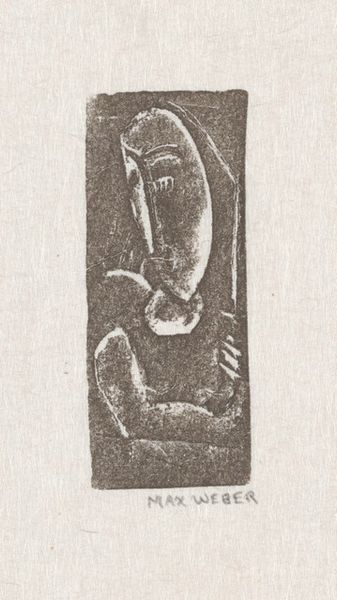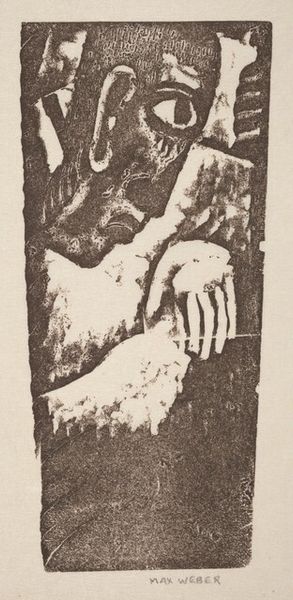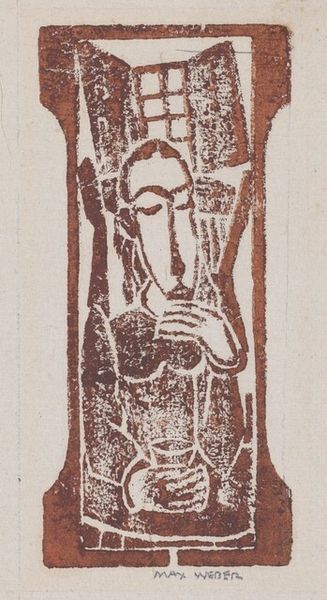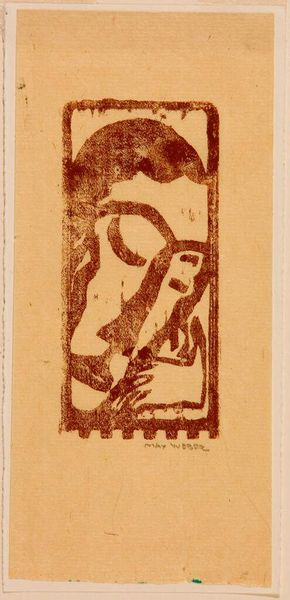
print, woodcut
#
portrait
#
ink painting
# print
#
figuration
#
expressionism
#
woodcut
#
abstraction
#
monochrome
Dimensions: image: 10.64 × 5.08 cm (4 3/16 × 2 in.) sheet: 15.24 × 9.37 cm (6 × 3 11/16 in.)
Copyright: National Gallery of Art: CC0 1.0
Curator: Well, here we are in front of Max Weber's "Seated Woman," a woodcut print made between 1919 and 1920. What strikes you about it at first glance? Editor: It feels… elemental. Reduced. Stripped back to the very bones of form and feeling, like a memory half-recalled in a dream. Curator: Weber really pushes the expressive qualities of the woodcut, doesn’t he? Notice how the stark contrasts create such a graphic impact. It’s intriguing how he uses the materiality of the medium to heighten the sense of primitive strength. I'm thinking about how a print can be both a unique artwork but also infinitely repeatable, so thinking about class, consumption, labor that goes into both... Editor: Absolutely, and the grain of the wood becomes so much more than just a surface; it’s intrinsic to the artwork's character. You can almost feel the artist's hand carving away, leaving only what is essential. Curator: Right, and this piece is particularly fascinating because it marries figuration with elements of abstraction, reflecting Weber’s interest in avant-garde movements and a yearning for spiritual truth during a time of immense social change after World War I. I wonder what was in his workshop; what was available and inspiring his choices to make this? Editor: You can see how Expressionism influences his reduction of form into emotional symbols. It is as if, in the wreckage of modernity, these stark prints were attempts to uncover core meanings from the very substance of art-making. Even today, I think we want to recover the directness and unpretentiousness of such media. Curator: Agreed. It serves as a powerful reminder that art can distill the human experience into its most fundamental, resonant form. Editor: Indeed, leaving us to consider how, with only a few lines carved into wood, Weber captured something so profoundly human and enduring.
Comments
No comments
Be the first to comment and join the conversation on the ultimate creative platform.
